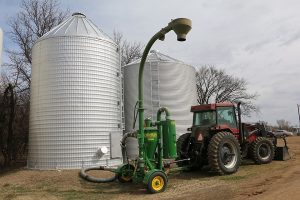Long-term grain storage has been the bane of every farmer’s life. If done improperly, this can render the precious harvest wasted. For this reason, it is important that you store your grains properly to avoid wastage.

As it turns out, the first step to this isn’t in the harvest itself, but on the grain bins. Here’s what you should do to ensure optimal long-term storage.
- Prepare your storage facilities – Make sure that your grain bin storage is clean and dry. You should also check under it and around it. Make sure there is no spot for insects to grow. Remember that if you battled insect infestation in the previous harvest, then you should fumigate your bin.
- Dry your grain to the right moisture content – Put only high-quality and mature corn into the bin storage so that it will keep better. Then, understand the right moisture content for your grains. You need to know the maximum allowable storage of your product, and you need to know the different temperatures that you should monitor throughout the year. You should never be complacent and set it at just say, 13% and leave it for a year. Also, make sure that you improve aeration by using a grain spreader. This ensures that the air will go through your harvest evenly and there would be minimal spoilage.
- Mind the temperature – The temperature for your grain storage is not the same during summer and during winter. For this reason, it pays to use a storage system that is combined with a good aeration system. This gives you full control of the temperature, so you can adjust it as you need.
The quality of your produce would depend on the quality of the grains that you put into the storage at the beginning, and how well you maintained it during the storage. In case you have any doubts, ask us at KC Supply to see if your storage system is enough to keep your grains free from spillage or wastage if you are considering long-term storage.


